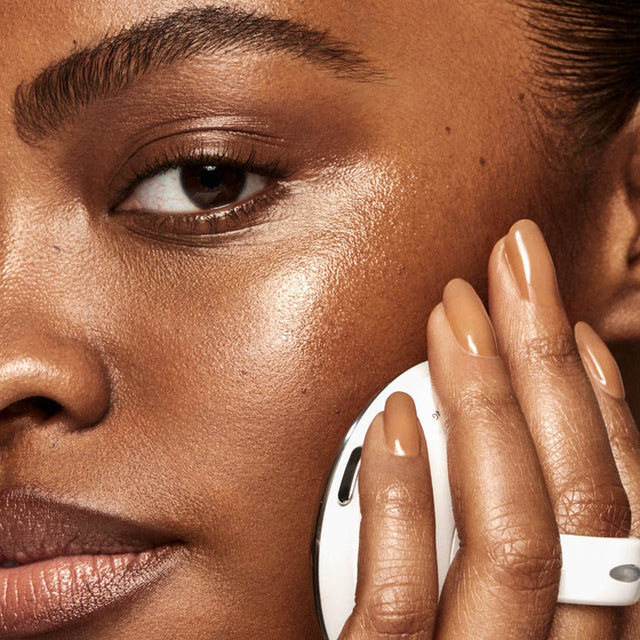My introduction to shea butter came through a Nigerian grocer I met at a farmer’s market in the summer between my sophomore and junior years of college—the summer I went natural. For me, the decision for the big chop was more than just a change in my hairstyle. It was the culmination of a complicated journey of self-discovery.
I’d spent the first two years of college tracing my family genealogy. In my search, a librarian helped me find a photograph of my great-great-great-great-great-grandfather, an enslaved person. He wore glasses, like me, and those glasses slipped to the end of his nose, like mine. I was in awe. The librarian smiled at me and told me that all of my features belonged to someone else before they were mine. We’re all an amalgamation of the ancestors who came before us.
I thought about that a lot. Ultimately, that comment and the thirst in my bones to know more about who I was and from who I descended led me to cut my hair and allow it to grow in its natural state. Deep down, I hoped I would come across another photo of some distant ancestor and recognize their hair texture as my own. It was idyllic and perhaps a little naïve, but it led me to that farmer’s market in search of the right products to care for my new coils.
When the Nigerian woman at the farmer’s market pressed the shea butter into my hands, it was with instructions to use it for my skin and my hair. The golden-hued salve became a lifeline for my hair and skin. It replaced every cream and lotion I’d ever purchased, and soon, vats of shea butter in every shade from ivory to goldenrod filled the cabinets in my bathroom. Little did I know, my obsession provided entry into a long-standing tradition.
The rich history of shea butter spans centuries, from Cleopatra’s reign in Egypt—where she kept the oil stored in large clay jars—to now, where it is the featured (or sole) ingredient in beauty products on seemingly every shelf, from high-end boutiques to neighborhood convenience stores.
For thousands of years, women have extracted shea butter from the nut of the shea tree and used in therapeutic and cosmetic applications. The butter’s ubiquity is well-earned. Many have touted it as a beauty cure-all. From getting rid of ash and stretch marks to natural hair care, beauty enthusiasts sing shea butter’s praises for treating and conditioning the body head-to-toe. Chock full of good-for-you nutrients including Vitamins A and E which are essential for healthy skin, shea butter moisturizes and protects skin from the damaging elements.
In West Africa, they sometimes call shea butter “women’s gold” not solely because of the color of the miracle balm but because of the economic opportunities it offers as one of the few commodities on the African continent mostly controlled by women.
The processing and production of shea butter is an ancient practice passed down from mother to daughter. And the sales of the butter provide economic opportunities for women and girls in shea-producing countries. Shea butter’s supply chain creates a unique bond between women in the shea belt of Africa and women in the western world who consume shea butter via cosmetics.
Companies like LIHA Beauty and Buttah are bringing shea butter to the masses by making it the star ingredient in their skin formulations. LIHA Beauty offers pure shea butter, while each of Buttah’s products are infused with grade A shea butter imported from Africa.
These Black-owned brands’ use of the butter means putting shea butter—a uniquely African ingredient, produced and sold by mostly African women—front and center in the luxury beauty market. It means putting African culture front and center. And simultaneously dismantling the erroneous belief that African culture is inferior to Western culture and supporting a female-dominated economy.
LIHA Beauty co-founder Liha Okunniwa told Vogue Magazine, “We launched LIHA because we realized that so many people in the natural skincare community had no idea what shea butter was. We wanted to educate people about how wonderful shea butter is for your skin and how easy it is to use. We’re trying to go somewhere with this for the culture.”
The next time you reach for LIHA Beauty’s Gold Shea Butter or Buttah’s Cocoshea Revitalizing Cream, consider how the simple act of slathering the luxuriant butter onto your skin connects you to generations of women world-over who have done the same.








